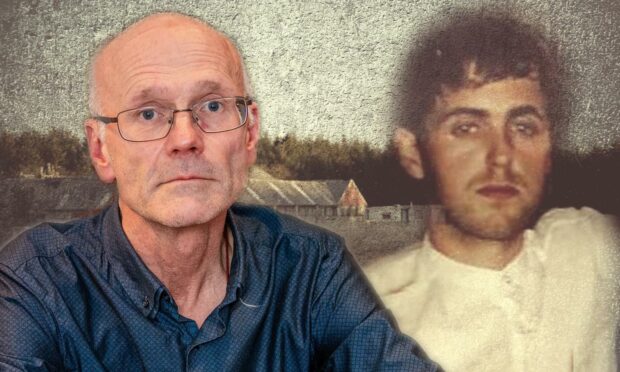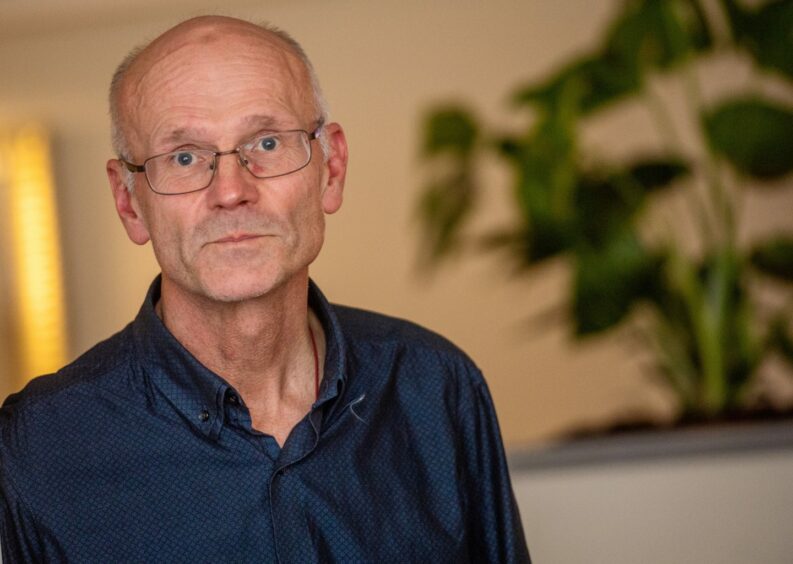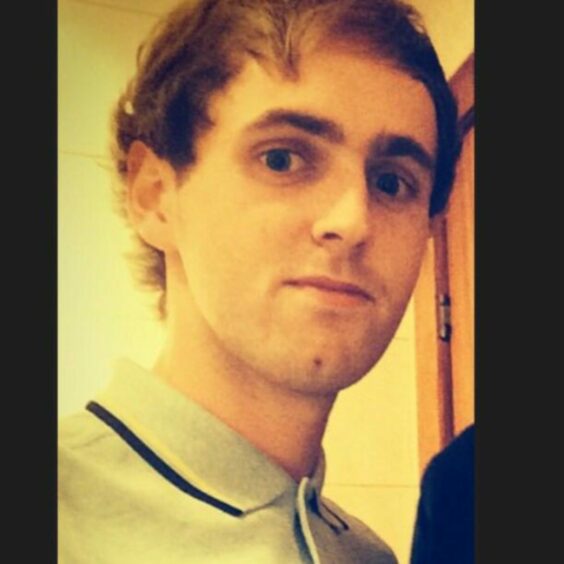An expert IRA grave finder who helped look for missing Fraserburgh man Shaun Ritchie believes new experimental technology could assist police in a fresh search investigation.
Dr Alastair Ruffell, a forensic geologist, is conducting tests with sonar drones that could help widen the search for Shaun Ritchie to areas that were deemed inaccessible for his ground penetrating radar during the original hunt.
The Queen’s University Belfast professor visited Kersiehill Farm in 2015 with his specialised equipment that can help locate buried human remains.
Due to the logistics of searching the bogs near where Shaun’s hooded top and shoes were found in November 2014, only 10% – 20% of the area was covered by the ground penetrating radar.
The drone would be able to fly over these area resting the sonar technology in the water.
Shaun Ritchie is not in the original searched section of bog
However the professor is confident that Shaun was not in the section of the bog he was able to search back then.
Ground penetrating radar helps detect non-metallic anomalies in the ground which makes it appropriate for locating human bodies.
Dr Ruffell said there was a “very high” likelihood his equipment would have located the missing 20-year-old had he been in that area.
“There were other anomalies in the bog which we proved, the obvious one was a cooking pot – so I spotted something, there was a blob on the radar, it was too small to be a body but it was something,” said Dr Ruffell.
“Plus you wanted to prove that the device could find something. So we lifted it out and it was a big old metal cooking pot – so the system works.”
Dr Ruffell told The Press and Journal that he would not consider the results of his original search “high-assurance” due to the lack of area covered and lack of data regarding Shaun’s whereabouts.
The first search not considered “High-Assurance”
“It’s not what I would call a high-assurance search because of the logistics – he had just disappeared into the bog,” he said.
“I like to give as close to 100% as I possibly can, even if we don’t find anything, we can say look we’ve been all over this multiple times – there’s no more we can do.
“The problem is multiple anomalies, so if we had searched the whole of that place we could have ended up with a hundred.
“But I don’t know the answer to that because we only surveyed 10% of it, maybe 20% of it.
“But the bits we did we either saw nothing or it was a cooking pot. It proves the concept but its disappointing when it’s not actually what you’re after.”
Shaun Ritchie was last seen at Kersiehill Farm near Strichen on Halloween night 2014 after travelling to the remote location in a van with seven other people.
Visiting the location during a dry spell the following year Dr Ruffell focussed on locations hard to search on foot.
He said: “It was basically the boggy area – all the stuff that was not walkable field because you could conduct a regular line search, metal detector if he had any metal on him, terrestrial ground penetrating radar, you could search it and put the dogs over it.
“The bog, some of it you could walk on, some of it you couldn’t, some bits you could float the boat on, some bits you couldn’t, we had to drag the boat at points – hence it’s not what I would call a high assurance search.”
New sonar drone technology
The new drone technology Dr Ruffell is currently testing would help give more assurances about the results of the original search as well as widen the scope of it.
“I would go over the same bit as it adds to quality assurance, especially with the new technology it’s quicker and it might see something more clearly that the old technology didn’t.
“And then you would go on (and cover the rest of the bog).
“We could cover a bigger area but because it’s not been done in that type of environment I’m not sure what the results would show.”
Since the release of The Press and Journal’s documentary Missing from The Broch: The Disappearance of Shaun Ritchie on October 31, the professor has had conversations with law enforcement about trying the experimental sonar drone at Kersiehill Farm.
Police Scotland receive fresh call as sister ‘overwhelmed’ by public response to P&J documentary
The professor was quick to highlight however that technological advances were not a “magic bullet” to solve the case.
“We’ve tried this on a couple of lakes, couple of rivers, a swimming pool.
“It’s not been to all environments under the sun in the way we’ve been doing it but it’s always worth a go – but no-one should get any expectations up, it’s all experimental.”
The Disappeared – victims killed during The Troubles in Northern Ireland
Dr Ruffell is a renowned expert in finding human remains and has worked closely with the Independent Commission for the Location of Victims’ Remains to help locate The Disappeared – victims killed by paramilitaries during The Troubles in Northern Ireland.
“I have found five bodies through at least 200 searches. It’s a very good return,” he said.
“The head of the National Crime Agency counts on one in 100. You expect to go out and not find anything because that’s usually the case.”
The professor specialises in water searches which includes peat bogs.
He said: “Not many people do this because it’s different parameters to what you use on the ground. And that applies to peat because peat is anywhere between 99% water, even though you can stand on it, and 60-70% water.
“So when you’re surveying peat it’s more like surveying water even though you can sometimes stand on it.”
“One thing we’re experienced of in Ireland is the Irish famine – so I’ve surveyed a lot of bits of ground which are famine graveyards, so they’re shallow, quite often no coffin or a cheap coffin, no embalming fluids, they are very like mass graves or homicide graves.
“Seven times out of ten they produce a very distinct signal for me to see, including of a couple I can think of in peat.
“I didn’t see anything like that (at Kersiehill Farm).”
Police Scotland have been approached for comment but have not yet responded.


